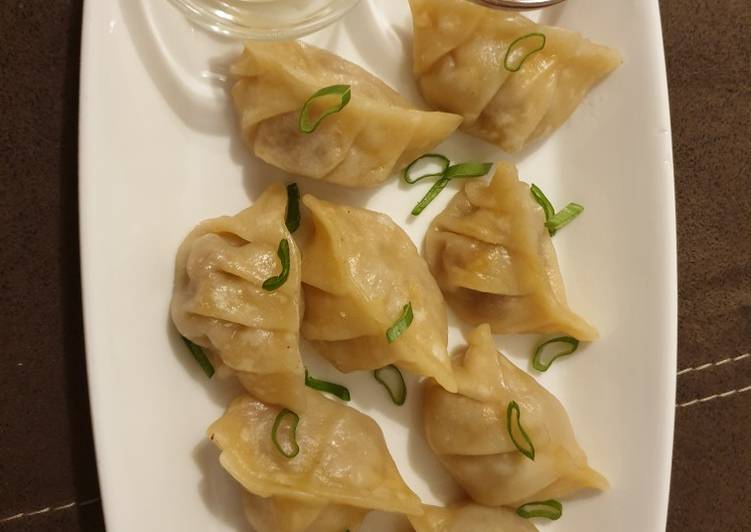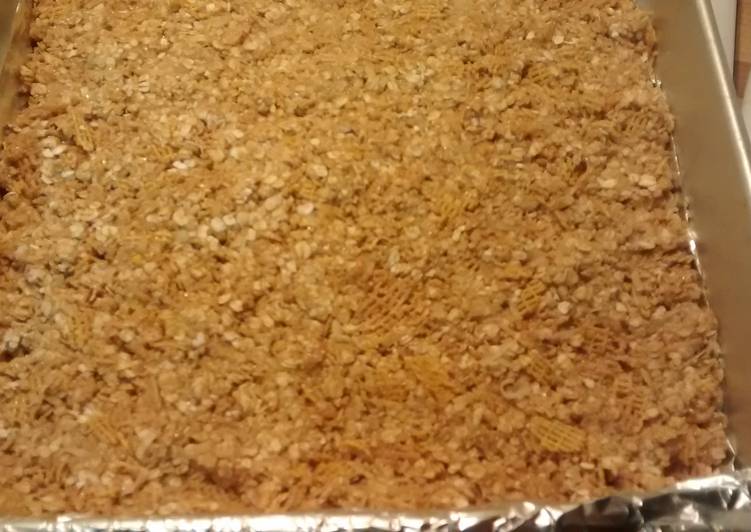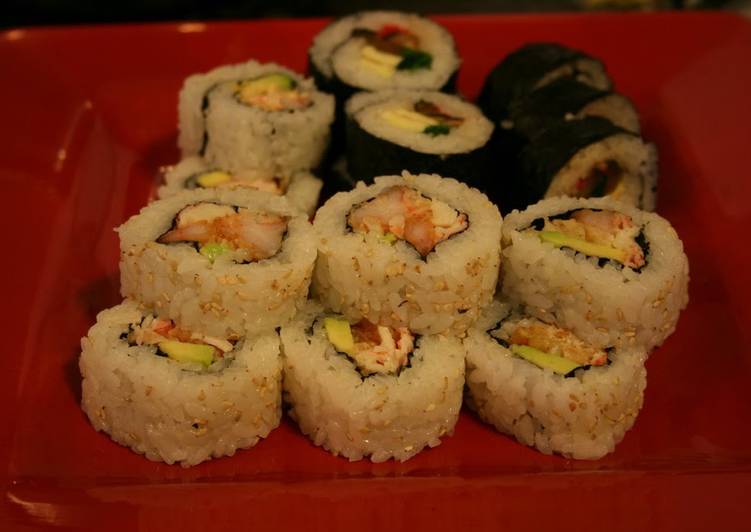
Hello everybody, hope you’re having an amazing day today. Today, we’re going to prepare a special dish, gyoza (japanese potsticker). It is one of my favorites food recipes. For mine, I will make it a little bit unique. This is gonna smell and look delicious.
Gyoza (Japanese Potsticker) is one of the most popular of recent trending foods on earth. It is easy, it is fast, it tastes delicious. It is enjoyed by millions every day. Gyoza (Japanese Potsticker) is something that I’ve loved my entire life. They are nice and they look wonderful.
Juicy on the inside, crispy and golden brown on the outside, these Japanese pan-fried dumplings, Gyoza, are popular weeknight meal as well as a great. This Japanese Gyoza recipe is my mothers', and it's a traditional, authentic recipe. Juicy on the inside, a golden brown and crispy base, these are made in a skillet and are one of.
To get started with this recipe, we have to first prepare a few components. You can have gyoza (japanese potsticker) using 12 ingredients and 9 steps. Here is how you can achieve it.
The ingredients needed to make Gyoza (Japanese Potsticker):
- Get 1 1/2 cups green cabbage, very finely chopped
- Prepare 1 tsp salt, separated
- Get 500 g ground mince beef
- Make ready 1 cup garlic chives, finely chopped
- Prepare 1 garlic cloves, crushed
- Prepare 1 tsp ginger, grated
- Prepare 1 tsp sesame oil
- Make ready 1 tbsp cornstarch / corn flour
- Make ready 2 tsp soy sauce
- Get 1 tsp cornflour (cornstarch) - for tray
- Take 40-45 round wonton (gyoza) wrappers
- Make ready 3 tbsp vegetable oil (or other cooking oil)
Unlike wontons, the gyoza dumpling wrappers are slightly thicker and have a chewier texture which goes great with the filling. An easy recipe of Gyoza or Pot-sticker Dumplings! Filled with pork, cabbage and spring onion this Japanese delicacy is quick and tasty! Gyoza(餃子) is the Japanese version of the Chinese dumpling Jiaozi(饺子).
Instructions to make Gyoza (Japanese Potsticker):
- Combine cabbage and 1/2 tsp salt in a small bowl, then set aside for 20 minutes to allow the cabbage to wilt slightly.
- Place remaining Filling ingredients (including remaining 1/2 tsp salt) in a large bowl. Squeeze out any excess water from the cabbage and add to the bowl.
- Use your hands to mix the Filling. Sprinkle a baking tray with 1 tsp of cornstarch / cornflour.
- Place 1 gyoza wrapper on your palm (left hand for right-handed people). Dip your finger in water and run it around the edge of half the gyoza wrapper (to seal).
- Place 1 slightly heaped tbsp of Filling on the wrapper. Fold wrapper over and use your right hand assisted by your left hand thumb to create 4 pleats. Press to seal and place on the tray. Repeat with remaining wrappers.
- Heat 1 tbsp oil in a large skillet (that has a lid) over medium high heat. - Place about 12 gyoza in rows, slightly overlapping each other. Cook until the underside is light golden, then pour 1/3 cup of water around the gyoza and place the lid on.
- Cook until the water has completely evaporated (so the golden underside is not wet and soggy) and the wrapper is slightly translucent on top - about 3 to 4 minutes.
- Plate and serve.
- Please don't forget to tag @appetizing.adventure on Instagram if you try this recipe!
Better known as "potstickers" in the US, they're delightful little dumplings made with garlicky meat and vegetables. Japanese gyoza are like Chinese dumplings and potstickers but use thinner skins and finely ground meat. Gyoza are a more delicate than the usual potsticker. Japanese Potstickers (gyoza) recipe: Try this Japanese Potstickers (gyoza) recipe, or contribute your own. These gyoza (Japanese potstickers) are filled with a combination of tempeh, mushrooms, vegetables, and seasonings to make a super flavorful vegan dumpling.
So that is going to wrap it up with this special food gyoza (japanese potsticker) recipe. Thank you very much for your time. I am confident you will make this at home. There’s gonna be interesting food in home recipes coming up. Don’t forget to bookmark this page on your browser, and share it to your family, colleague and friends. Thank you for reading. Go on get cooking!


